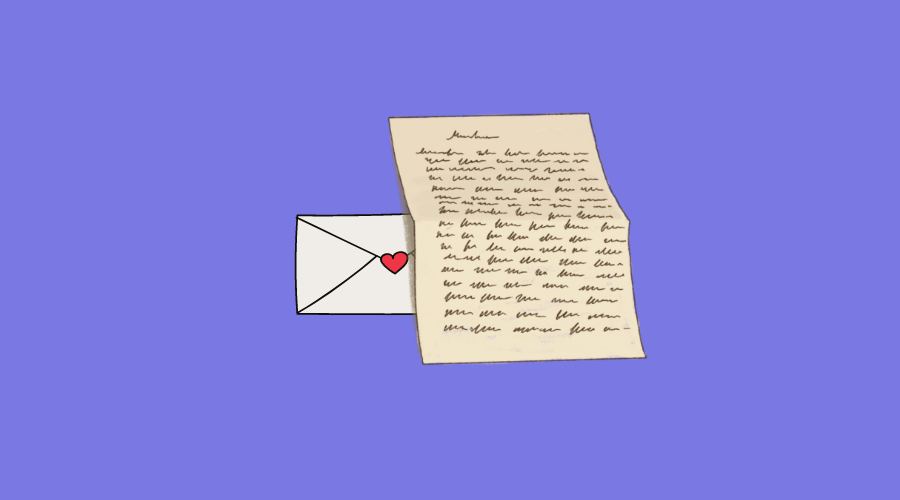
How to Write an Acknowledgement Letter for Donations
Posted Jun 28, 2023 | Updated 2 years ago
Acknowledging donations and expressing gratitude is an important part of the nonprofit donor lifecycle. You want supporters to know their contribution is appreciated, no matter the amount, and to keep them in the loop about how they’re furthering your mission.
That appreciation fosters a deeper connection to your nonprofit organization in Colorado Springs, compelling donors to continue to give. Additionally, there are practical and legal reasons for sending donation acknowledgment letters to help you and your donors keep track of tax-deductible funds.
What is a Donation Acknowledgment Letter?
A donation acknowledgment letter, which is also called a donation receipt or donor thank-you letter, is a tool that nonprofit organizations use on a regular basis. As the name implies, the letter is first and foremost about expressing gratitude for the generosity of your supporters.
According to the Internal Revenue Service, nonprofit organizations are required to provide donors with a written acknowledgment to substantiate a charitable contribution of $250 or more, and it must contain certain information, so donors can keep it for their records. However, many groups will send thank-you letters for monetary or in-kind donations even if they are less than the $250 minimum.
Another legal requirement for nonprofits is that the acknowledgment must be sent before Jan. 31 of the year succeeding the year in which the donation was made. That means if your group receives a gift May 23, 2023, you have until Jan. 31, 2024, to send the letter. Again, many organizations try to follow up more promptly, sending their thank-you letter within a couple of weeks.
Organizations use different methods for sending the acknowledgment, whether it be as an attachment to an email or a printed letter. For major donations, you may also have a member of your team reach out to the individual or business to express your gratitude, in addition to sending an email or printed thank-you letter.
Nonprofits often have several example donation letters or templates for use. You might have a specific letter you send to first-time donors—regardless of what prompted their gift—that helps draw them further into the organization. You also should have customized templates for each major mailing you do, such as your end-of-year appeal letter, and various fundraising campaigns. That way, the letter can be poignant, relevant, and reference the project, program or other campaign that caught their interest and motivated them to give.
You’ll also tailor thank-you letters to the type of donation, whether it’s an in-kind donation, stock donation, cash donation, or legacy donation.
What Should You Include in a Donor Acknowledgment Letter?
While donor thank-you letters will vary depending on the campaign, type of donor, type of donation, and other factors, there are some important elements that remain consistent. Here are a few examples:
1. The Organization’s Letterhead
The best practice is to use letterhead for your donor acknowledgment letters and print them on high-quality paper. The letterhead should include a high-resolution version of your nonprofit logo and contact information, such as your address and phone number.
2. Personalized Greeting
When possible, your nonprofit’s thank-you letters should address the donor by name. You can use a variety of salutations, but perhaps the most common is “Dear [First Name],” because it establishes that personal connection from the get-go. Fortunately, email marketing platforms offer merge tags and donor databases have similar tools that enable you to automatically personalize the address line and salutation for each recipient. Throughout the body of the letter, be sure to include donor-centric language, focusing on “you” statements that make the individual feel more valued.
3. Reference to Campaign and the Impact
Your nonprofit organization might have a generic donor acknowledgment letter to send to first-time donors or when you don’t know what initiated the donation. In many cases, though, you will be tracking if donations are coming in as a result of a specific direct mail campaign that happens on a regular basis or if they are earmarked for a specific project or program. In your corresponding thank-you letters, make a reference to some of the topics addressed in that original material. Additionally, share how the donor’s gift will have an impact. For example, if you are a nonprofit wildlife sanctuary and a donation came in for facility upgrades, you might write:
“Progress continues on our goal of improving our sanctuary near Colorado Springs. We are nearing our fundraising goal, and we’re excited to begin work in the coming months. Your gift will help ensure we can provide suitable habitat and welfare to local wildlife, giving them a second chance at living their life in comfort and refuge for years to come.”
4. Tax Receipt with Key Information
Donor thank-you letters are also used for tax purposes. If you’re a 501© nonprofit and the donation is tax-deductible, include a statement of your organization’s tax-exempt status; your EIN; the type of gift; the amount donated or a description of non-cash donations; and the date of the donation at the bottom of the letter. For example, you can put:
“[Name of Nonprofit] is a 501©3 organization (EIN). Your donation of [Amount] that was received [Date] is tax-deductible to the extent of the law. No goods or services were provided in exchange for your generous gift. Your donation allows us to continue [Iteration of Mission Statement].”
For donations of $250 or more, the IRS requires written donor acknowledgment letters to contain this additional information:
- statement that no goods or services were provided by the organization, if that is the case;
- description and good faith estimate of the value of goods or services, if any, that organization provided in return for the contribution; and
- statement that goods or services, if any, that the organization provided in return for the contribution consisted entirely of intangible religious benefits, if that was the case.
If you’re acknowledging a stock donation, your letter should include the company name, as well as the number of stocks given, but you don’t need to include the value of the stock. Additionally, if you’re acknowledging a property donation, include the location or physical address for the property.
5. Valediction and Signature
Your thank-you letters should also include a sign-off and a signature from an important team member—ideally your executive director or development director—along with their title. If the donation is in response to a particular program or project, though, you could have that program director sign the letter instead. A few common valedictions used by nonprofits include: “Sincerely,” “With gratitude,” “Warm regards,” or “Many thanks.” Let it reflect the values and culture of your organization.
6. Extra Special Touch
Nonprofits that include something extra or a personal touch in their donor acknowledgment letter are significantly more likely to foster deeper connections with supporters that increase donor retention and donor lifetime value. There are several ways to accomplish this, depending on your type of organization and capacity. You could have a team member or volunteer put a little hand-written note on each letter. If your organization works with youth, have them create a small drawing on the letters or a separate sheet of paper to include in the envelope with the printed letter. If you run an animal shelter, include a paw print or a picture of one of the animals you’re currently housing. Whatever that personal touch is, make it your own and relevant to your mission and the work you do in the community.
Developing Donation Thank-You Letters for Your Colorado Nonprofit
Since your nonprofit will likely be dealing with donor acknowledgment letters on a regular basis, it’s worthwhile to streamline the process through your donor management system or donor database. Whether you’re a new organization or working to develop new processes and systems, our team at Third Angle is here to help. We specialize in business marketing services for nonprofits in the Colorado Springs area and will work with you to gain fresh perspectives, optimize your website and print collateral, and optimize your budget to increase your impact in the community.

